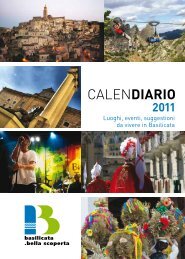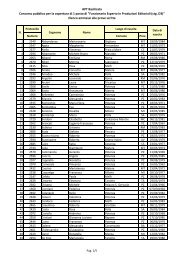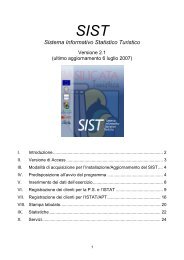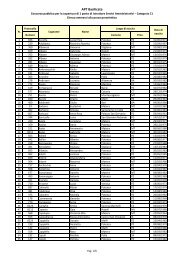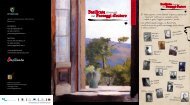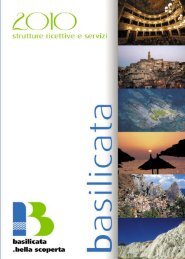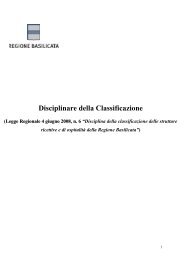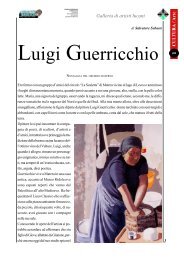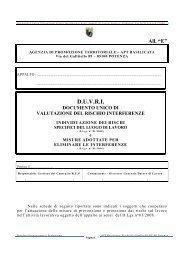Archeonaut - APT Basilicata
Archeonaut - APT Basilicata
Archeonaut - APT Basilicata
- No tags were found...
Create successful ePaper yourself
Turn your PDF publications into a flip-book with our unique Google optimized e-Paper software.
The“Dino Adamesteanu”NationalArchaeologicalMuseumVia Andrea Serrao - Palazzo Loffredo - tel (+39) 0971 323111opening times: Monday 2:00 – 8:00 pm;Tuesday - Sunday 9:00 am - 8:00 pmclosed weekly: Monday morningsProvincialArchaeologicalMuseumVia Ciccotti - tel (+39) 0971 444833Sunday and Monday 9:00 am - 1:00 pm;Tuesday - Saturday 4:00-7:00 pm (wintertime: 9.00-13.00)closed weekly: Monday afternoonsPotenzaThe “Dino Adamesteanu”National Archaeological MuseumThe National Archaeological Museum in Potenza, inaugurated inMay 2005, was named after Dinu Adamesteanu, the Romanianarchaeologist and undisputed father of archaeology in <strong>Basilicata</strong>.The desire to create a network of museums in <strong>Basilicata</strong>, in thoseplaces principally marked by the presence of Lucanian history andarchaeology, was mainly due to him.The two floors of the museum house a true archaeological anthologyof <strong>Basilicata</strong>: an adventure of peoples, both Hellenic and non-Hellenic(and then indigenous and Roman) which can be seen in the displaycabinets, in the reconstructions of buildings and tombs, and in thedescriptions on the panels that guide the tours of the museum.Following a chronological plan, the museum guides the visitorthrough its halls among archaeological records gathered from thecountless excavation campaigns that have been organised throughout<strong>Basilicata</strong>.It is an anthology of epic events and common people, of kings andprincesses, of materials that were brought from afar (such as theamber from the Baltic and bronzes from the Etruscan world) andobjects created by the hands of local craftsmen.The pre-colonisation phase, the indigenous presence of Oenotrians,Daunians and Peuketiantes, then the Greek colonisation, the presenceof the Lucanians, and lastly Romanisation are the fundamental stagesthrough which the history of <strong>Basilicata</strong> is presented at the DinuAdamasteanu Museum. The spectacle fibulas that the women usedto adorn their clothes, the armillas (bracelets) and gold and bronzependants, and the warriors’ swords discovered in pit graves in thehuge necropolises portray the Choni-Oenotrians who lived along theIonic coast (Santa Maria d’Anglona - the ancient Greek Pandosia)between the 5th and 8th centuries BC.The settlement at Incoronata di Pisticci (in Matera) has alsoproduced remains from the first phase of Greek colonisation. Theoldest decorated ceramics, on which skilled hands painted scenesof heroes and myths borrowed from Greek culture, date back to thisperiod.7



